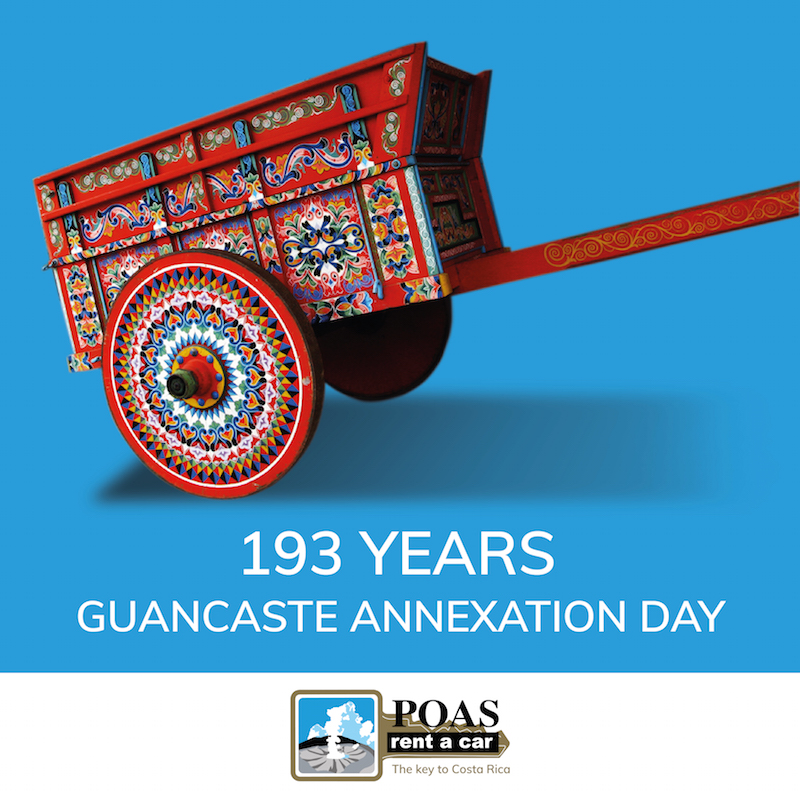Celebrating Guanacaste’s Choice – Guanacaste Day

From Spain, to Nicoya, to Costa Rica — Celebrating Guanacaste’s Choice
July 25th, or as we call it, the Annexation of Guanacaste Day, marks the date when a portion of Nicaragua became a piece of Costa Rica way back in 1824. Of course, the territory had been someone else’s, long before the first Conquistador ever arrived, but let’s fast forward to the last two centuries if we may…this post isn’t that long. 😉
Back then, Nicaragua was embroiled in civil war, and since the inhabitants of Guanacaste decided not to be a part of it, they requested to join Costa Rica. The vote was made, papers signed, and the Central American Federation ratified the measure. Across the border, the date is commemorated for different reasons as the Nicaraguan press like to rehash the legalities of the adoption. Some things are hard to let go of apparently…
Despite the bad blood across the border, Guanacaste citizens have embraced their Costa Rican identity. Their famous motto “De la Patria por nuestra voluntad,” that translates to ‘Of the country from our choice’ evidences this pride. The election to join Costa Rica demonstrates democracy; an essential Costa Rican value.
The celebration is a national holiday. The province of Guanacaste is a huge hub of activity with many different cultural festivities. Guanacaste Day’s importance is confirmed as all banks, governmental offices, public services and businesses are closed for the day.
I’ve personally enjoyed many festive activities, including the spectacles, such as the typical dances, folk music and more. Of the many parades, one of which involves costumed school students parading through the streets. My favorite shows are the bullfights because they have always been such a part of the celebration. As a nature-oriented country, Costa Rican bullfighting differs from the classic Spanish matador-led show of bravado and blood. Tico-style bullfights involve young men baiting or teasing the animal around a rodeo ring for twenty to thirty seconds of pure adrenaline. This brave rite of passage finishes with the bull angry, but alive and well to perform yet another day.
On a calmer note, Guanacaste’s streets are lined with artisan goods and local dishes — like corn-based foods and barbecued beef. Once the marching bands have reached the park in the afternoon, there’s live music, firework displays and typical dancing in the later hours. The well-known ‘Caballito Nicoyano’ (little horse from Nicoya) and the other national dances of Costa Rica, like the ‘Punto Guanacasteco’, are frequently performed during the festival.
The marimba (precursor to the xylophone) is the national instrument of Costa Rica and an intrinsic part of the celebrations as is the Nicoyan traditional bomba from the word ‘bombeta’, meaning firecracker.
The four lines of light-hearted poetry, with the second rhyming with the last, are delivered in a musical pause, and is usually comical — frequently uses a twist or risqué pun in the final line to raise a laugh from the audience. Passed from generation to generation, a famous example of this folklore would be:
Las ramas del tamarindothe branches of the tamarind
se revolvieron con las del cocointertwine with those of the coconut
mi mamá no quiere que yo me casemy mother doesn’t want me to marry
ni yo tampoco.And me neither!
The person delivering the bomba will usually then ‘whoop’ in a distinctive fashion which is famously Guanecastecan.
In retrospect, it’s an amazing experience. Oh, I almost forget to tell you about the morning music band. A Cimarrona band (composed of wind instruments and a bass drum) will pass by the houses, waking up the people of the neighborhood and encouraging them to leave their houses to greet the band and and partake in the small, early morning parade.



